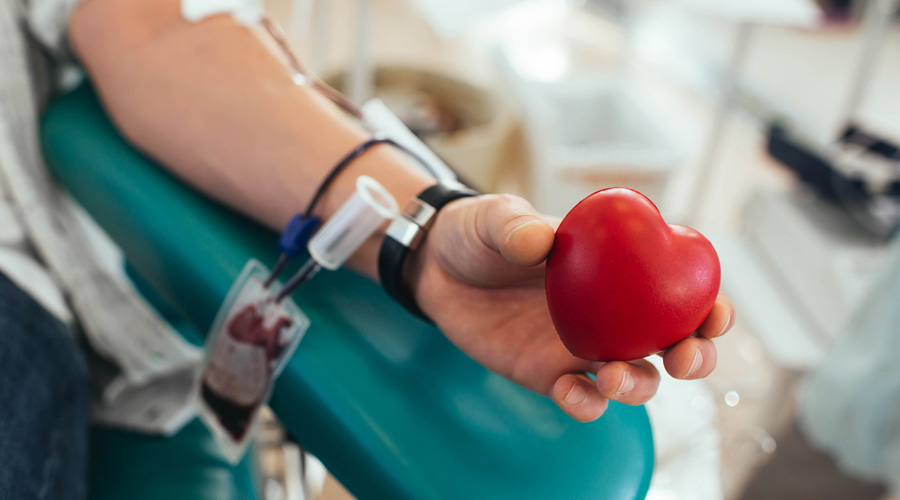Over the last few years, India has focused at improving its health indicators spanning across both rural and urban areas. Despite improvements in health infrastructure and accessibility, ensuring safe and adequate blood, and voluntary blood donation remains elusive. Improving accessibility and availability of safe blood, is still a huge challenge in India, because the country is marred by poor health-seeking behaviour, higher disease burden, and limited access to healthcare facilities.
Currently, India is largely dependent on the replacement blood donation mechanism, under which the family members or friends are asked to donate blood in return for the units administered to the patient. However, this form of blood donation does not necessarily replace the blood group or quantity administered and leads to increased risk of transfusion-transmissible infections.
The National Blood Transfusion Council, under the purview of the Ministry of Health and Family Welfare has mandated that there should be at least one blood bank in each district. The Drug and Cosmetics Act. 1940 has all the guidelines for setting up a blood bank and obtaining a licence. As per the data shared by the Union government in the Rajya Sabha, India in the year 2021, had 3321 licensed blood banks. There were 63 districts in India that did not have a blood bank. These districts were in Arunachal Pradesh, Assam, Manipur, Bihar, Meghalaya and Nagaland.
As per a 2019 study conducted by The Lancet, India has the world’s largest shortage of blood, with all states together battling a huge shortfall of 41 million units and demand outstripping supply by over 400%. The overall global shortfall is 100 million units.
Why Does India Require So Much Blood
Patients may need a blood transfusion if they have anaemia, sickle cell disease, a bleeding disorder such as haemophilia, or cancer. A cancer patient, on an average, needs at least 100 units of blood. India relies heavily on transfusions due to a higher prevalence of blood-borne diseases and complications during pregnancy. About 60 million trauma induced surgeries are performed in the country every year. It is a witness to more than 1,200 road crashes every day.
The 230 million major operations, 331 million cancer-related procedures like chemotherapy and 10 million pregnancy complications require blood transfusion.
A culture of voluntary blood donation remains a distant dream in India – predominantly because of the misconceptions, misinformation and ignorance about the effect and safety of blood donation.
Common myths about blood donation
One of the most common myths about voluntary blood donation is that it reduces blood in your body, thereby impacting your immune system or that it makes you weak and impacts your health and well-being. People refrain from donating blood fearing that it is a painful and a long process and that it could lead to contraction of infections including HIV, and more recently COVID-19.
However, none of the above is true and holds no scientific evidence. In order to build a sustainable base of safe blood donors in India through an effective voluntary blood donation programme, the most vital step is to focus on increasing public awareness of blood donation. There is a need to bust all the myths that keep people from not coming forward to voluntarily donate blood and to create acceptance of the significance of blood donation as a social norm.
Cascading A Cultural Change
In India, the motivation and willingness to donate blood among the general population are low, let alone in a pandemic situation where considerable uncertainty prevails regarding the safety of blood donation and the risk of transfusion transmission of the infection. In addition, the restriction put forth in people’s movement to contain the disease spread became a hindrance factor for regular voluntary blood donors, even if they wished to donate.
The World Health Organisation recommends that a country’s blood reserve units should be equal to 1% of its population. As per the various PTI and media reports, India on an average collects 11 million units of blood every year, against the required 13.8 million units, leaving a deficit of 2.8 million units.
The government must push for a multi-sectoral and multi-stakeholder collaboration, creating opportunities to donate and raise public awareness on the need for safe blood. When it comes to inculcating a cultural change among people, educating and sensitising the youth will have a crucial role to build a pool of voluntary blood donors for the future. Corporates can play a vital role in this regard and organise various awareness campaigns about blood donation as part of their CSR activities. Corporations in partnership with civil society organisations can organise blood donation awareness campaigns in areas with low awareness. Such campaigns can also be conducted in schools with the aim of mobilising students to be active agents of change within communities.
Globally, several countries have blood donor education packs for schools and colleges which have interactive videos that take students through the donation process. They feature personal stories of young blood donors and recipients which makes them relatable and compelling. These packs also have quizzes as well as information, education and communication materials that not only help them understand the value of blood donation but also encourages them to become advocates for voluntary blood donation among parents, alumni and other community networks.
India is home to a fifth of the world’s youth. Half of its population of 1.3 billion is below the age of 25, and a quarter is below the age of 14. For India to attain adequacy of blood, it is vital for the future generation to not only understand the importance of blood donation but to also culturally imbibe voluntary blood donation as a social practice. One cannot emphasise enough the role of youth in shaping this change to reduce the demand-supply inconsistencies in our blood system. This presents us with a great opportunity to work towards a cultural shift from replacement blood donation driven by an urgency to one based on repeated, altruistic donation becoming a social practice.
